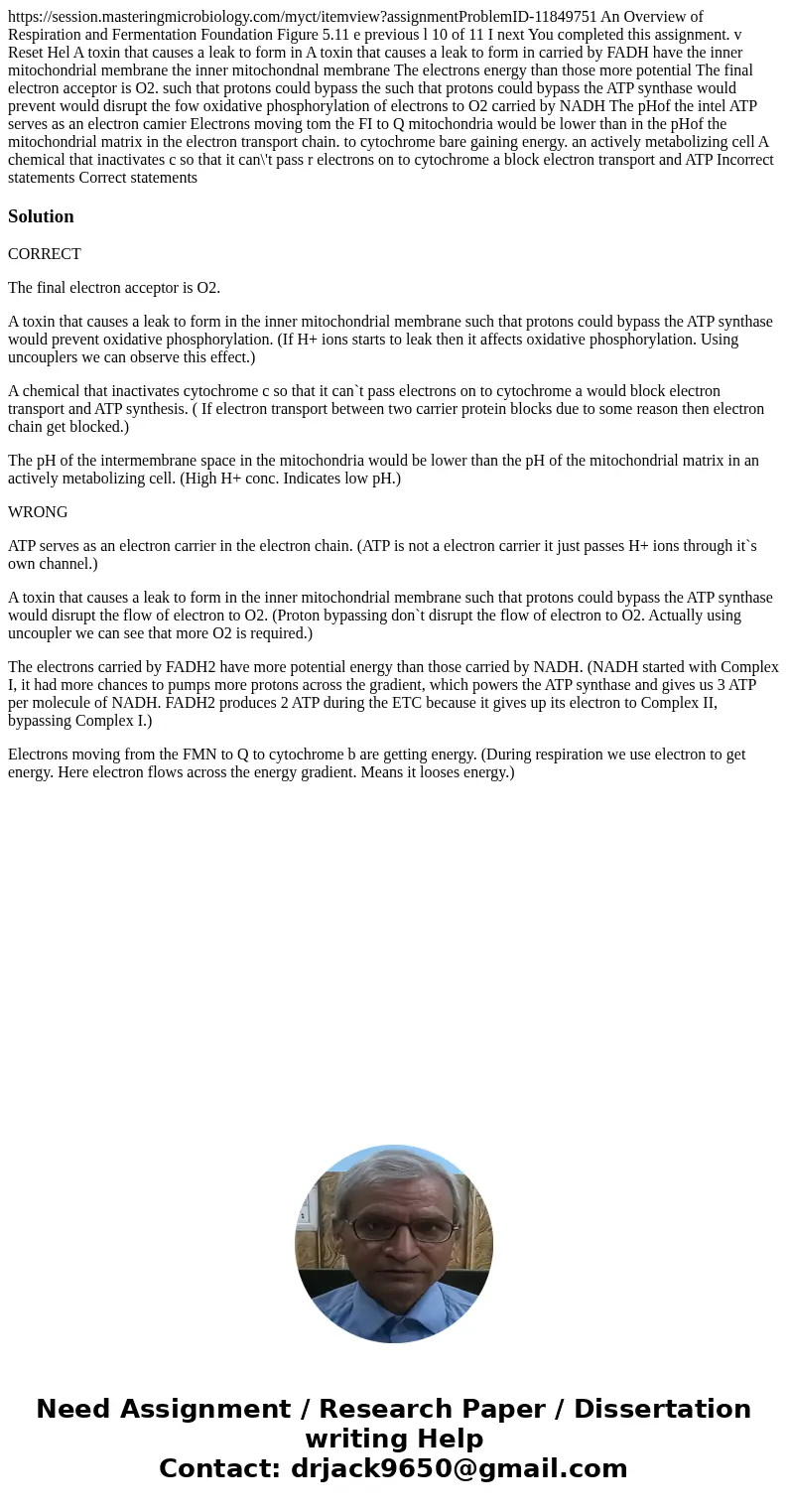httpssessionmasteringmicrobiologycommyctitemviewassignmentPr
Solution
CORRECT
The final electron acceptor is O2.
A toxin that causes a leak to form in the inner mitochondrial membrane such that protons could bypass the ATP synthase would prevent oxidative phosphorylation. (If H+ ions starts to leak then it affects oxidative phosphorylation. Using uncouplers we can observe this effect.)
A chemical that inactivates cytochrome c so that it can`t pass electrons on to cytochrome a would block electron transport and ATP synthesis. ( If electron transport between two carrier protein blocks due to some reason then electron chain get blocked.)
The pH of the intermembrane space in the mitochondria would be lower than the pH of the mitochondrial matrix in an actively metabolizing cell. (High H+ conc. Indicates low pH.)
WRONG
ATP serves as an electron carrier in the electron chain. (ATP is not a electron carrier it just passes H+ ions through it`s own channel.)
A toxin that causes a leak to form in the inner mitochondrial membrane such that protons could bypass the ATP synthase would disrupt the flow of electron to O2. (Proton bypassing don`t disrupt the flow of electron to O2. Actually using uncoupler we can see that more O2 is required.)
The electrons carried by FADH2 have more potential energy than those carried by NADH. (NADH started with Complex I, it had more chances to pumps more protons across the gradient, which powers the ATP synthase and gives us 3 ATP per molecule of NADH. FADH2 produces 2 ATP during the ETC because it gives up its electron to Complex II, bypassing Complex I.)
Electrons moving from the FMN to Q to cytochrome b are getting energy. (During respiration we use electron to get energy. Here electron flows across the energy gradient. Means it looses energy.)

 Homework Sourse
Homework Sourse